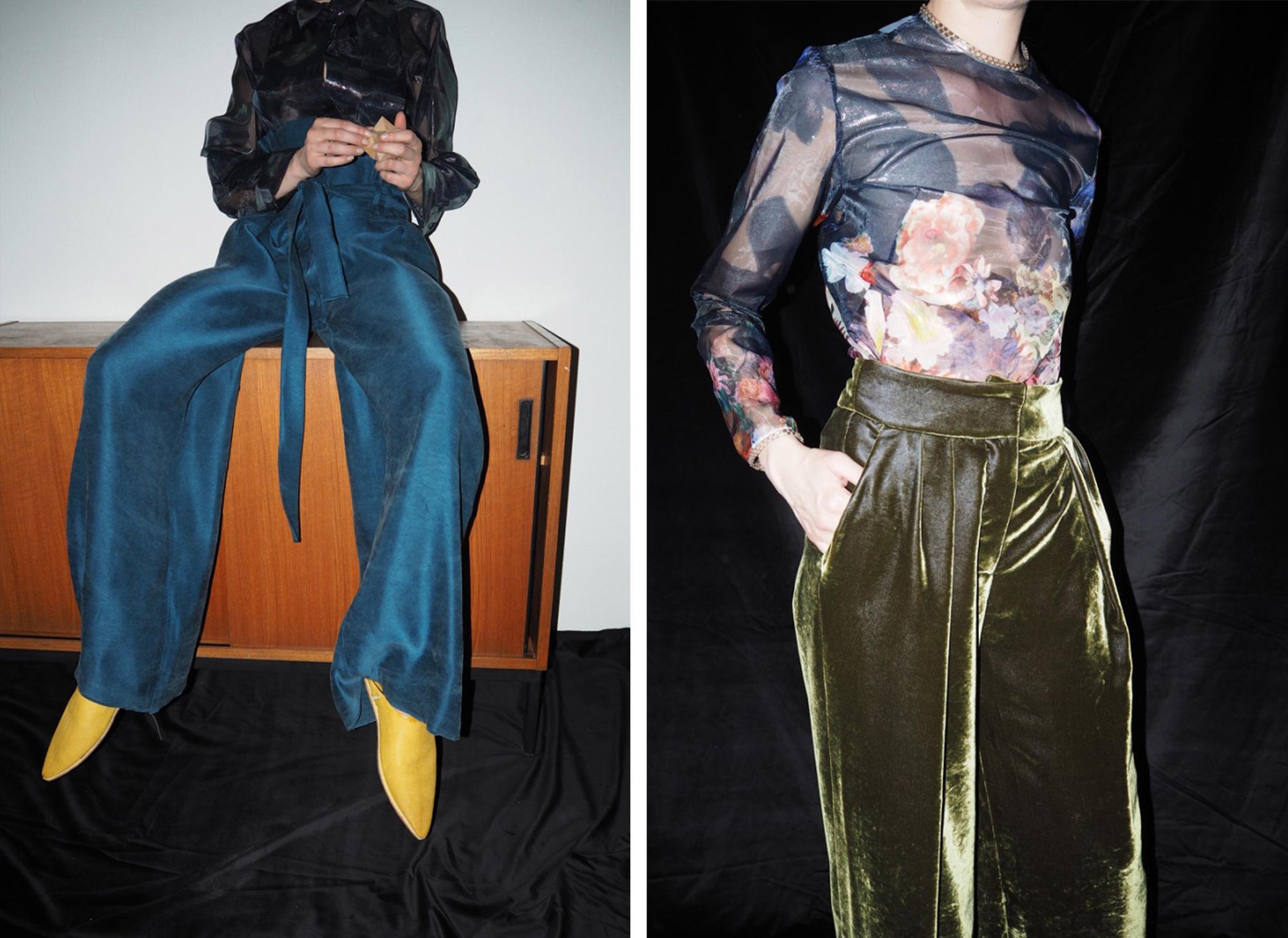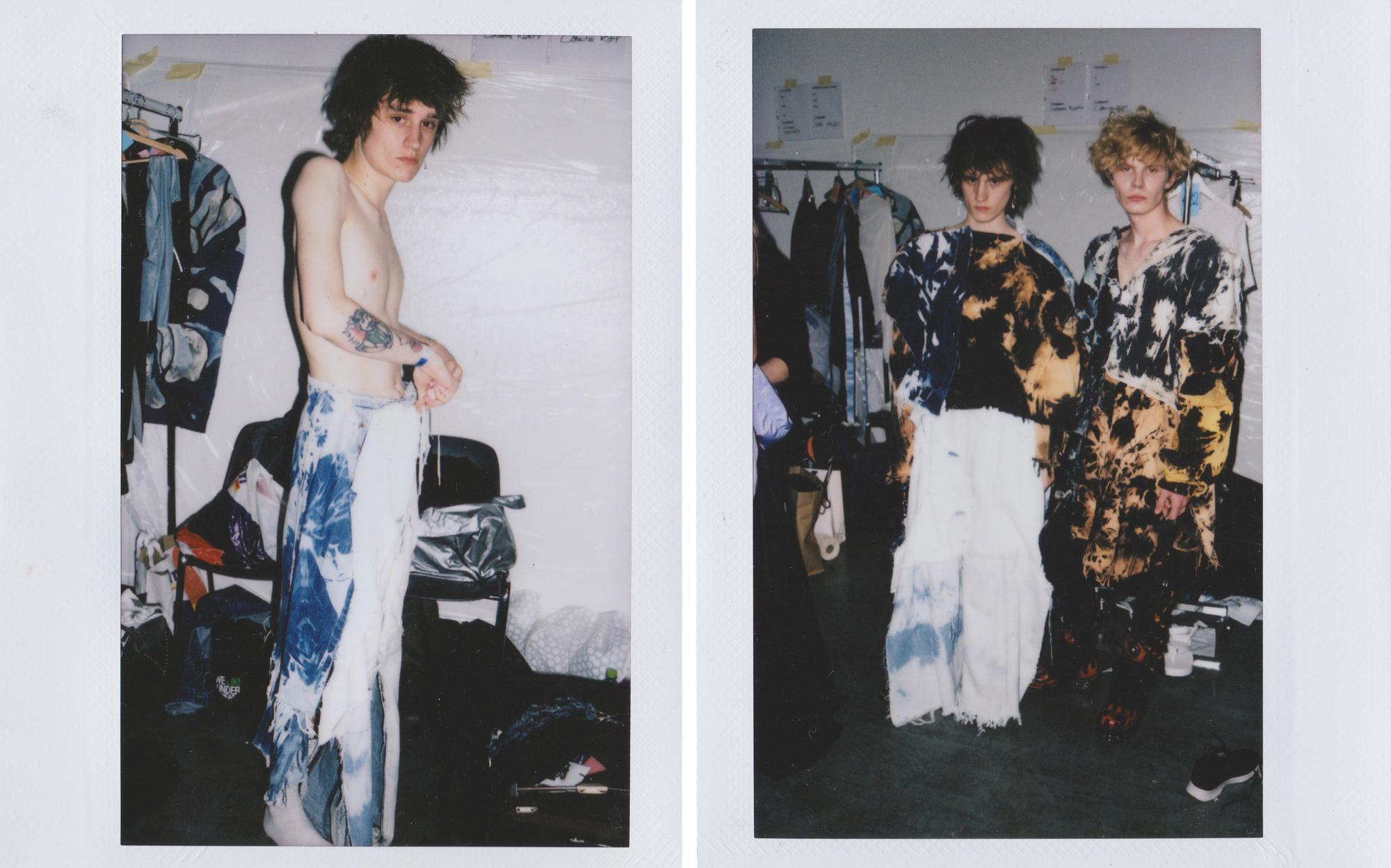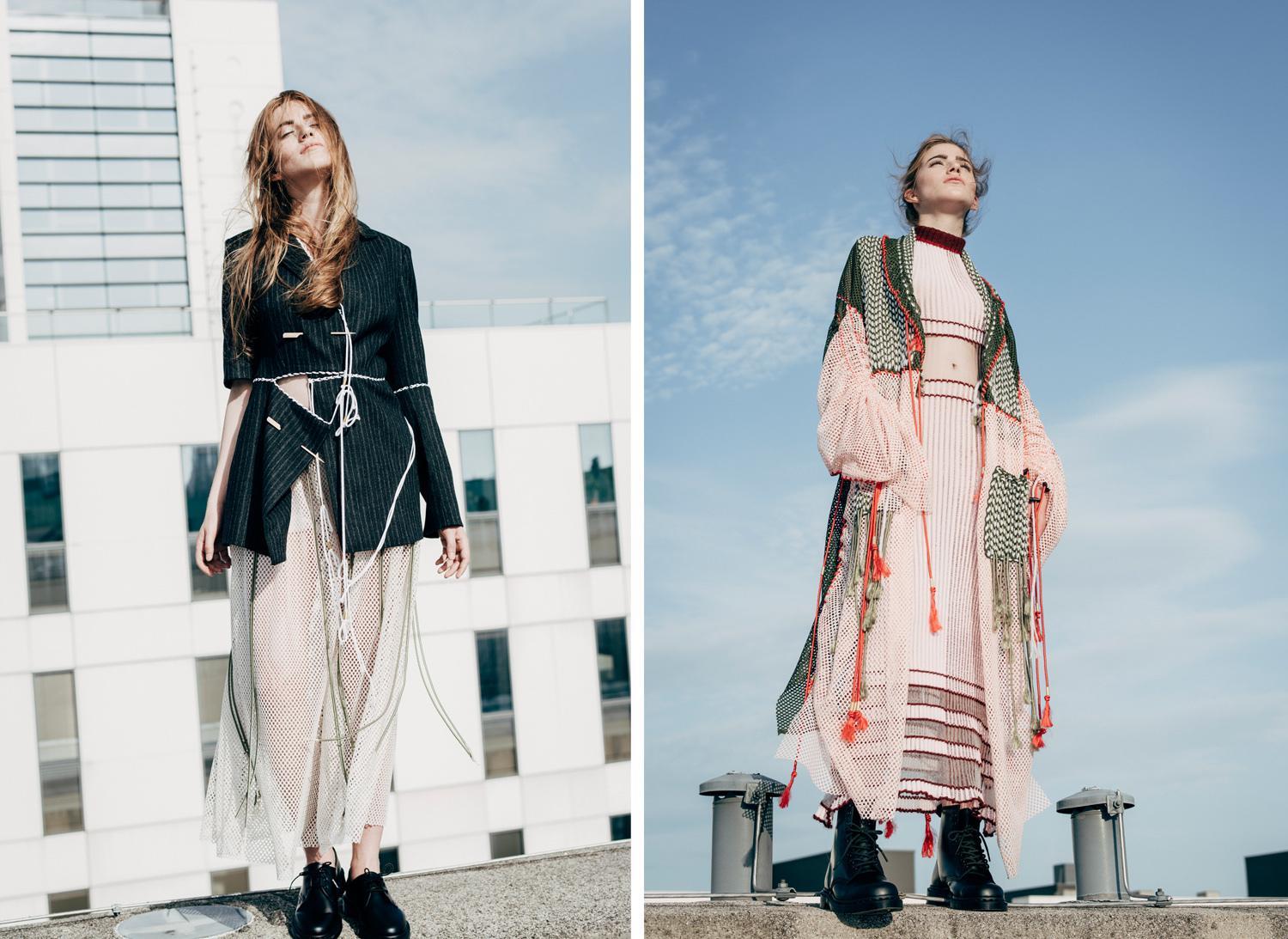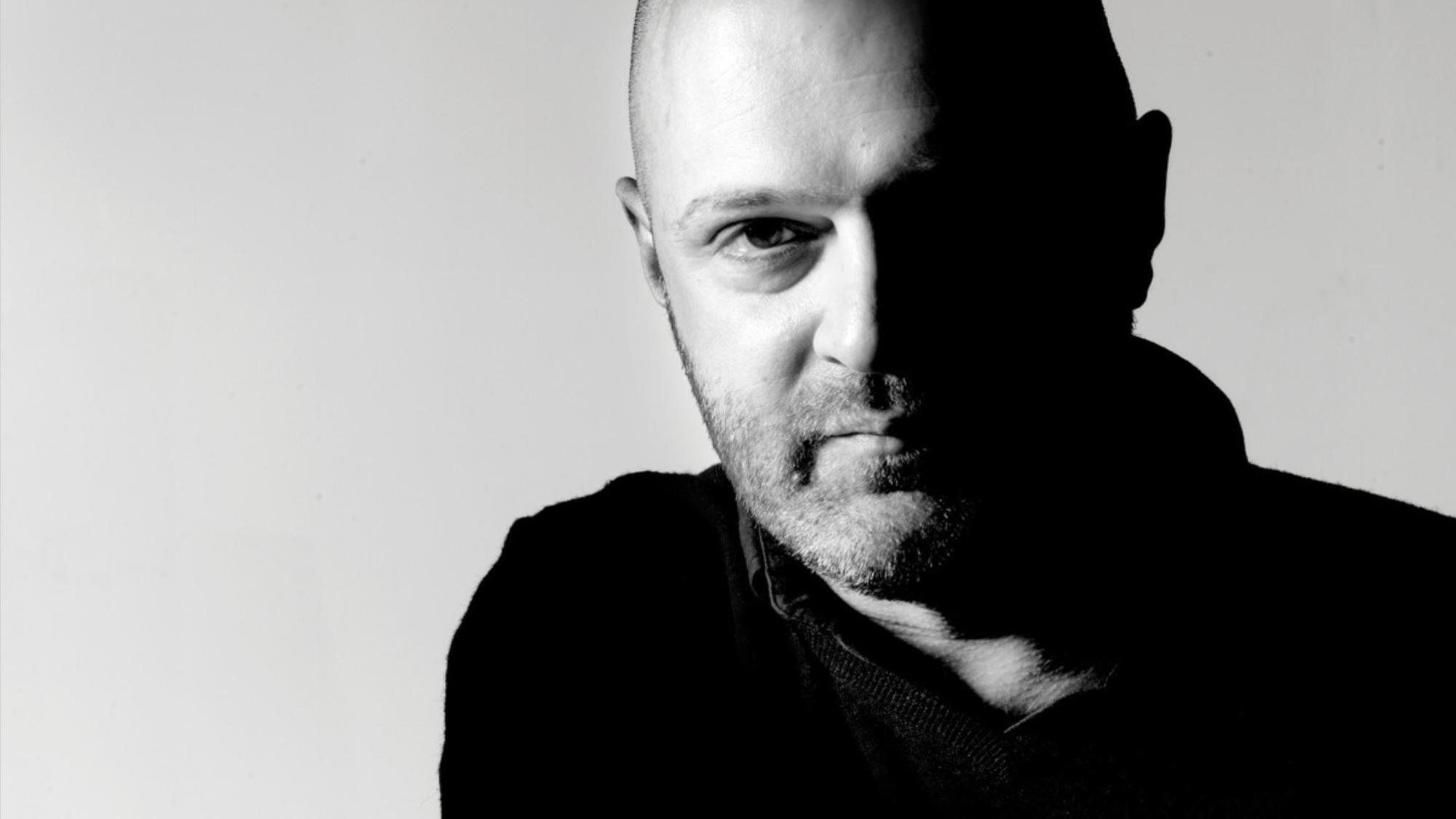Hussein Chalayan is a true multi-tasker. He is creative director at his eponymous label, designs ready-to-wear at Vionnet, creates costumes for the stage and high-profile musicians and is also a dedicated professor at Vienna’s Universität für Angewandte Künste. He is an innovator who continues to wow the fashion industry while questioning its role and pushing its boundaries. Last week Hussein was in Berlin for the premier of Mozart’s The Abduction from the Seraglio at the Deutsche Opera Berlin, for which he designed the costumes – simply one of his many side projects. Sitting across from the two-time British Fashion Award winner and OBE makes you realise that time is a precious thing and that’s exactly what he wants his students to understand. Hussein Chalayan is a true pro; always respectful, goal-oriented, fast and polite. His students consistently remark that, despite his schedule, it’s clear he truly values them and their work.
As the last preparations of Vienna’s fashion class presentation were being finalised, we sat down with Hussein Chalayan over coffee to discuss everything, from the current state of fashion to Vetements and how he plans to prepare his students for the ever faster fashion cycle.

To start with I would be really interested to know what the key memories of your student life are? Is there anything that you bring from that time into your teaching now?
From my student years at St. Martin’s I have many memories, it was definitely a life changing experience for me. I was at St. Martin’s when it was not that wealthy. There were only thirteen of us in a class and now it’s probably thirty people per class. It was a very different era—we were in the centre of London, it was the late eighties. There was not much money around, but a lot of creativity. Going to St. Martin’s for me was actually going to an art school where fashion happened to be a department. I find the school I teach at now, Die Angewandte, quite similar to the old St. Martin’s. We are engaging with others for instance with photography, with multimedia, with architecture. We are constantly collaborating. I feel like there are similarities because right now St. Martin’s is becoming a really big institution with many students and it’s in a way much wealthier and still very creative, but I feel that the energy that existed when we were there is not the same anymore.
Because these days it’s more about money?
The students themselves are given too much money by their parents and they are getting complacent. Also too many students are being accepted. Obviously there are some that are hard working, it’s definitely a mixture, but I feel in the early nineties there was much more problem solving going on. The fashion itself, as an industry—every idea that you see has been done before, it’s just the way it’s being put together and the way the differences are being mixed. I almost think that we are judging curatorial power these days rather than an inventive approach. Generally fashion is sort of problematic right now.
How do you feel the fashion culture is changing? Does that influence the way you work? Labels like Vetements are brands that seem to be about a collective or scene, not just the design.
Labels like Vetements should exist. But they are reissuing Margiela’s archives and I’m not sure if they are adding enough of their comment to it. There is nothing wrong with covering the past, it’s natural. There is a nostalgia for the past therefore I think people like Vetements make sense. I like it but I feel that they should push themselves a little bit more in an individual way because it’s too similar to the Margiela archive in my opinion.
This is how everything is going these days, isn’t it? When you look around, there is so much repeating going on, less commenting.
The role of a designer is to add ingredients that have novelty or that have something else — like cult shape, silhouette, colour, texture—all these things have a point of view and hopefully they push boundaries. If they don’t push boundaries, hopefully they have a character. If you want to just repeat somebody else’s archive—be a stylist. There’s nothing wrong with that.
How do you teach your students to do something different?
I would want my students to push boundaries and add a comment to existing things. This is often combined with their cultural background or popular culture and how they look at it. How they are following music; fashion and music have a big connection. It’s how they look at the art world. It has to do with if they are musical, or if they are into food, or travelling and so on. It really affects the way they look at their work. The easiest way of doing this is to broaden your horizon. If you are a fashion student don’t only look at fashion to be inspired. Look at things that aren’t in your comfort zone.
But isn’t it what everyone is doing anyway by looking at social media, Instagram, etc. There is so much out there …
The young generation is already oversaturated with data because we are in a digital era. I have watched the non-digital era and how it became digital. It’s about how you use it. You can use it in a very inventive way, as a means to stay in touch or to share ideas. I think it’s incredible. But you can also get lost in the data. It’s about how far you go. At the same time, it means you don’t miss things; you don’t have time to miss things. I think the idea of missing something allows you to appreciate things more when you get them. I’m not sure how well things are learned because of digital media and it’s not old-fashion to say that. It’s bouncing backwards. Everything in life is about how well we do things.
How do you use social media?
I don’t use it personally but my company uses it. I already work a lot and the minute that I’m not working I want to completely switch off so I’m staying away from it because I get obsessive. If I used it I would get into it in depth and be even more exhausted than I am now. That is the sole reason I stay away.
Do you see how technology and social media has changed the lives of students?
Students are using it to build communities. They are almost born into it. They are already raised with computers and mobile phones. For me it’s really about respecting that they work this way and asking how they can optimise it, not become desensitised and maintain their communication skills. I think it’s really important to have direct conversations with them. There are big differences between Viennese and London culture. We have a lot of Balkan students here who have a whole different approach. Their parents have been affected by the war. I find a lot of their energies still carry from that time.

Was teaching in London quite different?
Teaching atSt. Martin’s in London was much more international. Here you find variety, but it is less diverse.
Do you see it in the work as well?
Yes, I do. They have less access to certain things, for example fashion shops. They can see a lot of fashion designer’s work online. In London the fashion culture is very advanced. You find many well established designers, you have department stores, a fashion week. It’s a different outlook. Weirdly I find it more creative here. Sometimes having less can make you more inventive. I’m very happy with our final year this year, even more happy than last year.
What’s the main thing you’ve learnt from your students?
Youth culture. Generally speaking, the way they live. It is so interesting to see how different people think. Never mind that they are younger than me but they are also from different cultures. Of course you learn. It’s refreshing in terms of how it influences me. It doesn’t really influence my work but it keeps my mind open and I’m always interested in knowing people that are really different to me so I grow as a person. Absolutely you learn something – it’s not literally something with design but with mindset.
You once said that there are enough designers out there. Given this, why did you still decide to start teaching?
Because being a designer doesn’t mean that you have to be your own brand. You could be part of a team, you could be part of a collective. There are too many brands out there. It’s a really old-fashioned way of thinking that you graduate and you have to build up your brand because to build your own brand it means that you have to have money and backing, you can’t just do it. So many people do it and then they stop doing it. For me it’s very important that you create your own brand if you have something to say. Just because you have the opportunity to do it doesn’t mean that you should do it. For me that’s what I have meant. That doesn’t mean that we don’t support designers. A lot of people create their own brands without being ready without accessing what’s about to come. I’d like to see designers becoming their own brands when they really have something to say.

Is there a designer or brand you think is really pushing the boundaries right now?
Actually I think stylists are much better off than the designers right now because they don’t have the costs that the designers have but they can still participate and have a voice. In a way the currently stars are the stylists. On top of the rank are photographers. In a way it’s more like photographers, stylists and designers. It shouldn’t be like that. The designers give the stylists stuff to work with.
These days stylists and photographers are part of the design team.
Of course it’s collaborative but I think that the industry is almost shaped by photographers and stylists. And then by conglomerates who then call the shots in terms of which designers should get support. We are living in difficult times. In one sense everything appears democratic with social media and almost anyone can become a designer and it’s accepted but on the other hand it’s actually the conglomerates monopolising everything. It creates a system that kills creativity. It appears that it’s really democratic but actually it’s not. It’s like moving chairs. It’s not like they leave and give opportunity to new people. It’s the same circle. It’s kind of depressing. We have to start treating fashion as a very important part of culture, like architecture where there is a definite discourse where everyone has their role and it’s protected.
Do you think it can get to that point?
I think it could maybe change if the designers that are not part of the monopoly get together and do something. You go to a department store and you see certain brands there and 80% of those brands belong to big groups. You think, ‘Hang on, you don’t stand a chance, no matter how talented you are’. In my case I’m part of those designers and I’m in the stores too but in some aspects I’m not. I’m talking beyond my brand because in some aspects I’m lucky and in some aspects I could be more. If there was a collective of designers who would put their fingers up to it and demand some sort of change maybe something could happen.

Credits
Text: Alexandra Bondi de Antoni
Lede-Foto: Nick Knight via i-D UKPolaroids: Christoph Rumpf
Look-Book-Bilder der Absolventen via Angewandte PR
